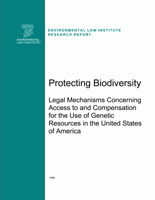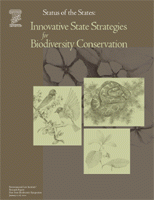Indiana's Biological Diversity: Strategies and Tools for Conservation

Public and private development and management decisions can -- and have -- resulted in losses and degradation of Indiana`s biological diversity. Sometimes these losses occur because of a lack of knowledge about the many opportunities that exist in Indiana for conservation and restoration activities. Many individuals, companies, institutions, and government agencies could contribute to protecting biological diversity if they recognized its economic value and social benefits. This publication identifies Indiana laws, policies, and institutions that affect the state`s biological diversity.



